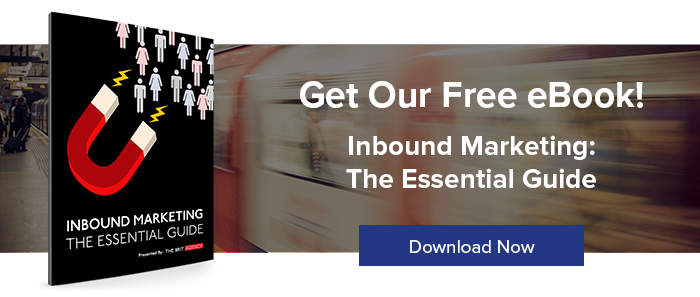LinkedIn is the big social media platform for B2B Inbound Marketing.
The platform has successfully captured a massive database of resumes from millions of professionals, who frequently use the platform to update their personal information for career opportunities, check for industry news and discover new networking opportunities.
When using LinkedIn for B2B Inbound Marketing, it’s important to take into consideration your buyer personas, the types of individuals you want to attract, and how they use LinkedIn. With over 400 million users, LinkedIn is an ‘absolute must’ for online branding, targeted content posting, building professional relationships and establishing your company as an industry leader.
There is no other social media platform that can create similar influence and opportunity amongst B2B companies. So you have to take it seriously.
Here are 4 tips to consider to get started with your B2B Inbound Marketing activities to create an influential presence on LinkedIn for your business.
Create a Captivating Personal Profile
It’s important not to make your profile look like a cover letter, like most profiles do. When organizing your profile, you should ask yourself these questions:
- Why am I doing this?
- Who will benefit?
- What do I want these individuals to do next?
By answering these three questions, you are able to shape the content and style of your profile around those who you want to attract. Be sure that the content is keyword heavy in order for Google to find your profile with the right keywords, and post content targeted at your ideal prospect.
Join and Participate in LinkedIn Groups
There are thousands of LinkedIn groups out there – so make sure you join the right ones. If you want to promote yourself to those groups, then you join the groups where your buyer persona hangs out. This is a great way for you to get your company name into view and network with companies that you think could be potential prospects.
If you wish to do business with manufacturing companies, join a group targeted to manufacturing. A good way to determine whether a group is right for you is to conduct a competitor analysis and analyze traditional research offered by LinkedIn’s Advanced Search option.
It is just as important to be active in these groups as it is to be a part of them. Contributing to the groups conversations will make your name known throughout the group. It will also give you an opportunity to share your company’s content if the topic is relevant to the discussion.
But don’t just post one of your blogs because the topic is right. Be sure you include a message with the blog to show how it can contribute to the greater good of the group.
Here’s an example: Hi (Their Name), Your comment made me think about a blog we recently published. Here’s the link, I think it might interest you - or something along those lines.
Also, share your experiences and ask questions in your groups. This will start possible conversations with specific members who could become potential leads.
Develop Your LinkedIn Network
In order to create a relevant and concrete network of contacts in LinkedIn, you must focus your efforts on attracting and connecting with those who you will gain something from, such as new contacts, or even potential leads.
In order to attract the right contacts, it will take a bit of effort. Use the LinkedIn Advanced Search tool to help you filter which individuals and organizations you should be connecting with. This tool allows you to get pretty specific in your searches, especially if you have LinkedIn Premium.
Once connected, be sure to introduce yourself to your new contact and interact on their profile. You can do this by endorsing them for a skill that they claim to possess, or writing a recommendation if you have worked or interacted with them in the past. A recommendation is like a review on that person or business.
Optimize Your Company’s LinkedIn Page
This part is very important since potential B2B prospects will be visiting your company’s LinkedIn page before making a decision of whether to do business with you or not.
Be sure that you create a business page that will appeal to your target persona. Include images that give off a vibe of your business’ personality. This can be done by updating your cover photo on a regular basis, and including images as part of your daily posts.
People are more likely to look at your posting if it includes good content such as white papers and video, therefore it’s crucial to include visuals in all or your posts.
Along with keywords and SEO, it’s crucial to include CTA’s in your LinkedIn posts. Linking back to your website is very important. Having an image or text that links back to your website allows those who are interested in the content to easily access entire articles on your website, which, in turn, can potentially convert them to leads.
Lastly, encourage your employees to be active with the company on LinkedIn by sharing and liking company content as it becomes available. List your employees on your company page to help give accreditation to your business. Also encourage them to share company updates in their own network as this will increase the reach of the original post.
THE BRIT AGENCY is a B2B Inbound Marketing Agency providing Inbound Marketing, Inbound Website Design and Inbound Sales services to companies around the world. We're focused on growing website traffic, qualified leads and sales, using the Inbound lead generation and marketing automation process.
THE BRIT AGENCY is a certified Gold Tier Hubspot Partner, a HubSpot COS certified Inbound Website Design Agency, a Shopify eCommerce Partner, and a certified "Google Badged Agency Partner". We have offices in Toronto and Barrie, Canada, and Salisbury, UK.


